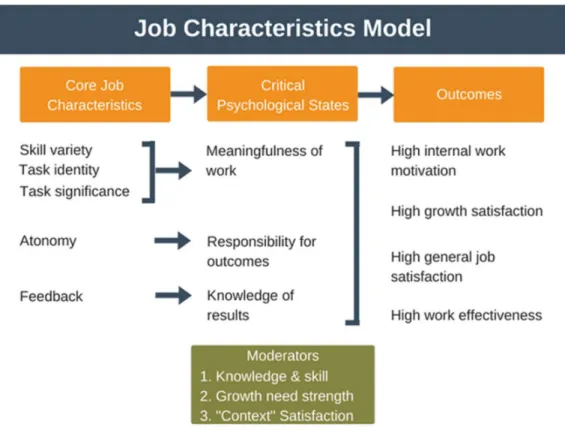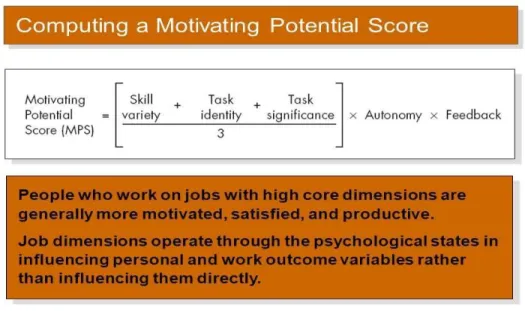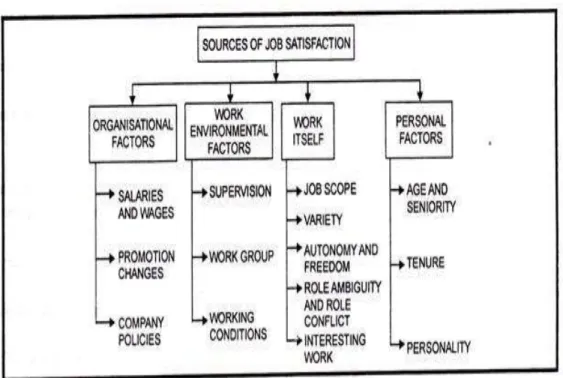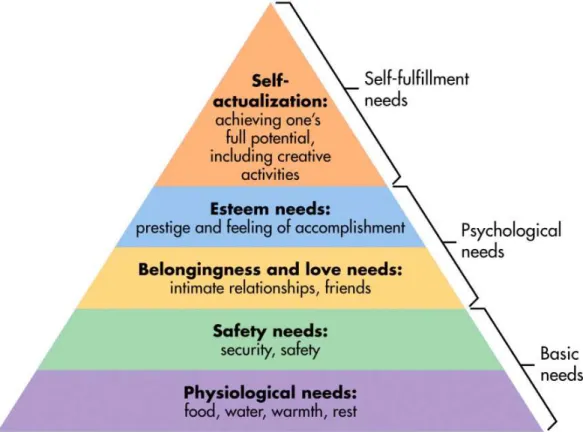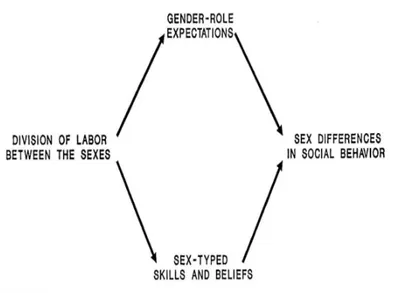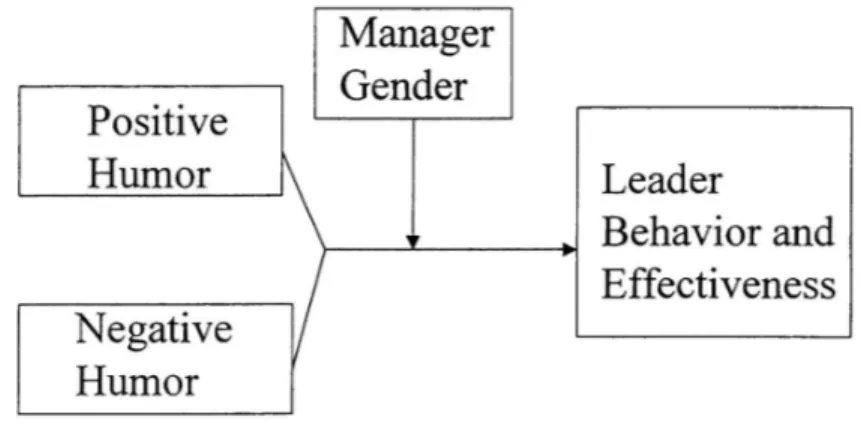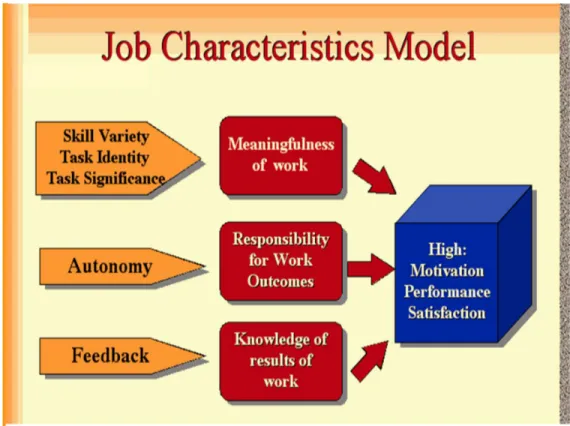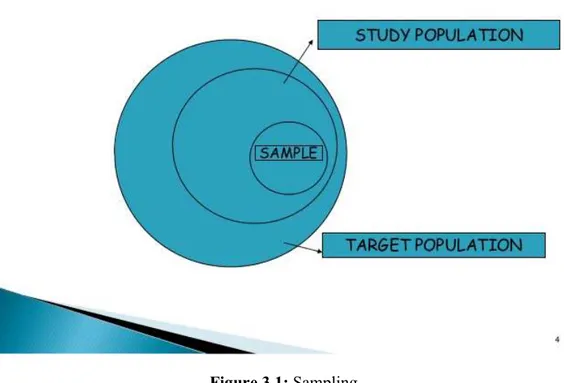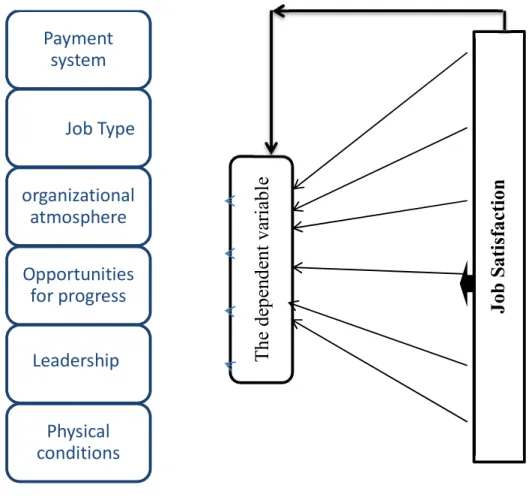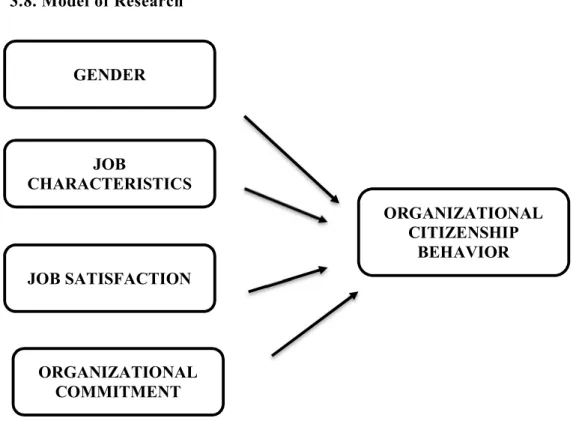T.C.
ISTANBUL AYDIN UNIVERSITY INSTITUTE OF SOCIAL SCIENCES
THE ROLE OF GENDER, JOB CHARACTERISTICS, JOB SATISFACTION, AND ORGANIZATIONAL COMMITMENT AS A DETERMINANT OF ORGANIZATIONAL CITIZENSHIP BEHAVIOR AMONG THE WORKERS
OF WELFARE ORGANIZATION
THESIS
Pouria MOTALEBI
Department of Business Business Administration Program
T.C.
ISTANBUL AYDIN UNIVERSITY INSTITUTE OF SOCIAL SCIENCES
THE ROLE OF GENDER, JOB CHARACTERISTICS, JOB SATISFACTION, AND ORGANIZATIONAL COMMITMENT AS A DETERMINANT OF ORGANIZATIONAL CITIZENSHIP BEHAVIOR AMONG THE WORKERS
OF WELFARE ORGANIZATION
THESIS
Pouria MOTALEBI Y1612.130100
Department of Business Business Administration Program
Thesis Advisor: Prof. Dr. Akın MARŞAP
DECLARATION
I hereby declare with respect that the study “The role of gender, job characteristics, job satisfaction, and organizational commitment as a determinant of organizational citizenship behavior among the workers of welfare organization”, which I submitted as a Master thesis, is written without any assistance in violation of scientific ethics and traditions in all the processes from the Project phase to the conclusion of the thesis and that the works I have benefited are from those shown in the Bibliography. (14/1/2020)
FOREWORD
I would like to thank Prof. Dr. Akın MARŞAP for his valuable comments, support, guidance, and encouragements throughout this study. It is to my beloved family that I dedicate this thesis. I am in eternal gratitude to my mom, dad, and brothers for their unconditional love and support throughout all my life.
Finally, I would like to express my sincere gratitude to all the people around me without whom this thesis would not have been completed.
January 2020 Pouria MOTALEBI
TABLE OF CONTENT
Page
FOREWORD ...vii
TABLE OF CONTENT ... ix
ABBREVIATIONS ... xi
LIST OF FIGURES ... xiii
LIST OF TABLES ... xv
ABSTRACT ... xvii
ÖZET ... xix
1. INTRODUCTION ... 1
1.1 Significance of the study ...4
1.2 Scope of the Study ...6
1.3 Cultural Relevance ...7
1.4 Research Questions ...8
2. LITERATURE REVIEW AND THEORETICAL FRAMEWORK ... 11
2.1 Organizational Citizenship Behavior: Its Roots and Related Frameworks ... 11
2.2 Variations In Organizational Citizenship ... 14
2.3 Job Satisfaction ... 16
2.4 Organizational Commitment ... 19
2.5 Job Characteristics ... 24
2.6 Gender ... 30
2.6.1 Gender and Sex ... 30
2.6.2 Overview of Gender role ... 30
2.6.3 Eagly’s Social Role Theory ... 30
2.6.4 Masculinity and Femininity ... 32
2.6.5 Gender Stereotypes ... 33
2.7 OCB and Gendered Job-Type ... 35
2.8 Theoretıcal Framework And Hypotheses ... 39
2.8.1 The Job-Satisfaction Connection with the OCB ... 40
2.8.2 Gender, Sex and Organizational Citizenship Behavior ... 46
2.8.3 The Relationship Between Job Characteristics and Organizational Citizenship Behavior ... 66
2.8.4 The Relationship Between Organizational Commitment and Organizational Citizenship Behavior ... 70
3. RESEARCH METHODOLOGY AND DATA ANALYSIS METHOD ... 76
3.1 Introduction ... 76
3.2 Research Method ... 76
3.3 Statistical Population, Sample, Sampling ... 77
3.4 Research Tools ... 78
3.4.1 Allen and Meyer Organizational Commitment ... 78
3.4.3 Test of Hackman and Oldham's Job Characteristics Survey ... 80
3.4.4 Test of Organizational Citizenship Behavior (OCB) ... 81
3.5 Hypotheses of Thesis ... 82
3.6 Research Methodology ... 82
3.7 Data Analysis Method ... 82
4. RESEARCH FINDINGS ... 85
4.1 Introduction ... 85
4.2 Descriptive Data ... 85
4.3 Inferential Findings ... 89
5. DISCUSSION & CONCLUSION ... 98
5.1 Introduction ... 98
5.2 Discussion and Conclusion ... 98
5.3 Research Limitations ... 104 5.4Research Suggestions ... 104 5.5Functional suggestions ... 104 REFERENCES ... 107 APPENDIX ... 123 RESUME ... 133
ABBREVIATIONS
OCB : Organization Citizenship Behavior IRB : In-role behavior
ERB : Extra-role behavior JCM : Job Characteristics Model MPS : Motivating Potential Score
LIST OF FIGURES
Page
Figure 2.1: Template of Work Features. ... 25
Figure 2.2: Effective Performance Motivation Model. ... 28
Figure 2.3: Correlation of factors with job satisfaction. ... 41
Figure 2.4: Maslow’s Job satisfaction model ... 42
Figure 2.5: A social-role theory of sex differences in social behaviors. ... 51
Figure 2.6: A model of humor use, manager gender, and leader outcomes. ... 57
Figure 2.7: Job characteristics model ... 67
Figure 3.1: Sampling... 77
Figure 3.2: Job satisfaction in the diagram ... 80
Figure 3.3: Correlated Model of Citizenship Behavior...83
LIST OF TABLES
Page Table 4.1: Descriptive indexes related to the gender of the subjects ... 85 Table 4.2: Descriptive indexes related to the age of the subjects ... 86 Table 4.3: Descriptive indexes related to the level of education ... 86 Table 4.4: Descriptive indicators related to the marital status of the subjects of the
research ... 86 Table 4.5: Descriptive indexes related to employees experience ... 87 Table 4.6. Descriptive indices of research variables in sample people ... 88 Table 4.7: Pearson correlation coefficients between job satisfaction score and
organizational citizenship behavior ... 89 Table 4.8: Gender correlation coefficients with citizenship behavior ... 90 Table 4.9: Pearson correlation coefficients between job characteristics and
organizational citizenship behavior ... 91 Table 4.10:Pearson correlation coefficients between organizational commitment
with organizational citizenship behavior ... 92 Table 4.11:Regression analysis of the criterion variable based on scores of predictive
variables ... 93 Table 4.12 Analysis of variance of regression of criterion variable scores on
predictive variable scores ... 94 Table 4.13:Predicting the variability of organizational citizenship behavior on
THE ROLE OF GENDER, JOB CHARACTERISTICS, JOB SATISFACTION, AND ORGANIZATIONAL COMMITMENT AS A DETERMINANT OF ORGANIZATIONAL CITIZENSHIP BEHAVIOR AMONG THE WORKERS
OF WELFARE ORGANIZATION ABSTRACT
The purpose of this thesis was to investigate the role of gender and job characteristics and job satisfaction also organizational commitment among welfare workers as a determinant of organizational citizenship behavior.
This work was carried out in the form of a descriptive-correlative outline, during the summer of 2018, the statistical demographics of the study includes all workers of the West Azerbaijan Region Welfare Organization (IRAN). Random sampling based on the Cochran table chosen as statistical samples. The findings showed a significant association between the actions of the female gender and the behavior of organizational citizenship (P<0.01). Also, Pearson's correlation coefficient and regression were used for data analysis. There is also a significant relationship between job characteristics and organizational citizenship behavior. The variables of job satisfaction, organizational commitment, autonomy, and payment system significantly explain the variance of employees' organizational citizenship behavior variables. Also, the findings showed that the relationship between the total score of job satisfaction and dimensions of physical condition leadership style, organizational atmosphere, job variety, with organizational citizenship behavior, the welfare workers of West Azerbaijan province have a positive and meaningful relationship and correlations also show that high score in these variables is associated with a high score in organizational citizenship behavior.
Keywords: Gender, Gender role, Gendered job-type, Gender stereotype, Job characteristics, Organizational citizenship behavior, Organization, Autonomy, Feedback, Job commitment
REFAH ÖRGÜTÜ ÇALIŞANLARI ARASINDA ÖRGÜTSEL
VATANDAŞLIK DAVRANIŞININ BELIRLEYICISI OLARAK CINSIYET, IŞ ÖZELLIKLERI, IŞ DOYUMU VE ÖRGÜTSEL BAĞLILIĞIN ROLÜ.
ÖZET
Bu tezin amacı, toplumsal cinsiyet ve iş özellikleri ile iş tatmininin rolünü ve aynı zamanda sosyal güvenlik çalışanları arasında örgütsel vatandaşlık davranışının belirleyicisi olarak örgütsel bağlılığı incelemektir.
Bu çalışma, tanımlayıcı-korelatif bir taslak şeklinde gerçekleştirildi, 2018 yazında, çalışmanın istatistiksel demografisi Batı Azerbaycan Bölgesi Refah Örgütü'nün (IRAN) tüm çalışanlarını içeriyor. Tesadüfi örnekleme Cochran tablosuna dayanmaktadır. Bulgular, kadın cinsiyetinin eylemleri ile örgütsel vatandaşlık davranışı arasında anlamlı bir ilişki olduğunu göstermiştir (P<0.01). Ayrıca veri analizi için Pearson korelasyon katsayısı ve regresyon kullanılmıştır.
Ayrıca iş özellikleri ile örgütsel vatandaşlık davranışı arasında anlamlı bir ilişki vardır. İş tatmini, örgütsel bağlılık, özerklik ve ödeme sistemi değişkenleri, çalışanların örgütsel vatandaşlık davranışı değişkenlerinin varyansını önemli ölçüde açıklamaktadır.
Ayrıca, bulgular iş doyumunun toplam puanı ile fiziksel durum liderlik stilinin boyutları, örgütsel atmosfer, iş çeşitliliği, örgütsel vatandaşlık davranışı, Batı Azerbaycan eyaletinin refah işçilerinin pozitif ve anlamlı bir ilişki ve korelasyonları olduğunu göstermiştir. bu değişkenlerdeki yüksek puanın örgütsel vatandaşlık davranışındaki yüksek puanla ilişkili olduğunu göstermektedir.
Anahtar Kelimeler: Cinsiyet, Cinsiyet rolü, Cinsiyetli iş türü, Cinsiyet kalıpyargısı, İş özellikleri, Örgütsel vatandaşlık davranışı, Örgüt, Özerklik, Geri bildirim, İş taahhüdü
1. INTRODUCTION
Throughout the mechanical age, the most worry and stress of management way find a modern way to create manual laborers that increasingly profitable. So, there was a scientific management system by Taylor that was very popular in the 20th century. If we want to talk about the nature and essence of this model we can say the way a harsh and strict from top to bottom hierarchy, to an extreme little division of labor with foreordained strategies of doing each work.(Warner,1990:17).
However, if we want to talk about the 1980s, we can say that today's knowledge-based economy cannot be comparable with the hierarchical and administrative and bureaucratic organizational format of the 1980s, that mass production was the idea of this era.In this century, 21st, we can see big and massive change and conversion, from manufacturing to full developed information-based era. (Teo,lakhani, Brown,2008:683).
Furthermore, differentiation and contrast between this century and 20th century can bee understood by the Drucker (1994) synopsis:
The real significant and actually truly unique, the contribution of management in the 20th century was 50 years increase in production of the manual workers in manufacturing. The most important contribution management needs to make in the 21st century is similarly to increase the productivity of knowledge work and knowledge workers. The most valuable property of the 20th-century company was its production equipment but the most valuable asset of the 21st-century institution will be its knowledge workers and their productivity.
Therefore we can say that the actors in today's knowledge-based economy have acknowledged that the company and firms with the highest degree and quality of knowledge work are the ones that grow very fast and creates more profits if we want to clarify it, it means today an organization's growth prospects highly depend on their knowledge workers because knowledge workers can produce the
information, extract meaning from it and create solutions and address, complex problems accordingly. (Davenport,2005:6)
Therefore, from an employment relations outlook, it is very important to understand and realize the factors that influence knowledge worker's performance.
Moreover, more than forty years ago, a researcher who was Katz(1964) recognized two aspects and feature of individual performance: First In-role, Second: Extra-role.
If we want to explain the role theory, we can explain it as a powerful and significant social psychology theory, that deliver the theoretical base and foundation for describing the difference and regularity of individual behavior. The inner idea and picture of the role theory is the role. The words ''role'' comes originally from the theater, that mention to the script managing the behavior of actors. social psychologists believe that people's place and position in social relations establish their social behavior, which is the same and similar to the script controls of the behavior of the actor. In this case, the first expert and scholar who proposed the idea of role in social psychology was George Herbert, but he did not explain the clear meaning of the role.
George only used it as a metaphor to show the case that different individuals showed similar behaviors in a similar situation. Otherwise, we have opinions of H.H Kelly and J.W Thibaut, that they said the role was the system, by which other expected a sequence of the behavior of an individual in a definite position in the interaction mechanism, and the system, by which individual in the certain and clear position expected of their own behaviors. In an organization, an individual is an element and member of that organization, whose behavior will be different based on a different situation that he or she faced.
With this background and basis, the concept of in-role behavior comes into being. Furthermore,in-role behavior also means core-task behavior. This idea and image for the first time offered by Katz and Kahn officially, in Katz opinion,in-role behavior was a kind of behavior that demonstrates as a part of employees work and task and reflected in the formal salary system in the organization. As well as,
Williams and Anderson explain the in-role behavior as all the behaviors that are very important for the fulfillment of the responsible and in charge work.
Katz also considers three important and main behaviors that have very important effects on the effective operation of the organization, i.e. people should specify two things, entering the organization and hold the identity of an organization member. Also for the role, in an independent way, each member of the organization must comply and fulfill the specific requirement.
Moreover, members will automatically produce and create many acts other than the role requires Kats noticed that: The organizations that depend on the behaviors required by the job description were the fragile and breakable social system. As well as, the Extra-role behavior the applied and practical significance of the OCB is improving and boost the effectiveness. OCB can be separated into two parts: the first part is the organization-oriented OCB. for this section, the concentration is on the organization. For instance: stick to not formal rules that goal is to hold the work orders. etc.
The second part is the individual-oriented OCB. For this section, the main goal of subjective behavior is to benefit and give advantage to the person, Also indirectly contribute to the organization in this way. For example, help an organization who was absent in another way interpersonal assists. Altruism is labeled for the individual-oriented OCB. Empirical investigation and research show and prove that OCB gives advantage and also benefit to the organization. In such different ways, like the satisfaction of customer quantity and quality of the products or service, sales performance, complaints of customer and income (Karambayya,1990; Podsakoff& Mckenzie,1994:351). Podsakoff and associates clear and explain the way that OCB effect and efficacy in organizational performance. Managerial productivity and coworker boost by OCB. Moreover, OCB can work as harmony and coordination between the group individuals and over work bunches.
OCB attract and keep elite people by making the work setting the more attractive and noteworthy location for working. Additionally, OCB may increment the consistency of organizational execution by decreasing changeability. Moreover, OCB increments the organization's capacity to adjust and suit to unused natural
changes. Also at the end, OCB increases organizational effectiveness by generating social capital.
1.1 Significance of the study
The idea of Organization Citizenship Behavior (OCB) in the early 1980s by Smith et al. (1983) also by Bateman and Organ (1983) has been reported to the scope of Organizational Behavior and has been studied strongly up to now. Depends on Podsakoff et al. (2000) that he has been stated between 1983-1988, the number of research published on OCB was only thirteen. Focus and research on OCB developed in many other disciplines like marketing, human resources management, hospital management, international management, and industrial and labor law (Podsakoff et al., 2000). However, OCB has been researched and focus in many areas and sectors but in the educational sector is as well unfamiliar. (Cheng, 2004).
Between teachers of the school, OCB has not been studied. Oplatka has stated, “a search for articles on OCB in schools yields substantially fewer than 10 citations worldwide” (Oplatka, 2006:386).
Based on the researcher's information, OCB has not been studied much in Turkey. Based on research by Çetin (2004) between 2001-2002 that was on OCBs of teachers who work in Istanbul,719 teachers working in pre-school, primary education, and high schools have participated in the study. She has tried to measure the degree of levels of OCBs of teachers. She has considered that teaching job consists of high level of OCB naturally. The factor analysis of the questionnaire she has developed and used had five factors and that were in accordance with the dimensions of Organ (1988); Namely Humanism, Conscientiousness, Modesty and Obeisance, Athleticism and Bravery, and Social pietism.
Research on 61 pilot results have shown the Cronbach Alpha of the scale as 0.96. The mean values for these dimensions were calculated with reliabilities ranging between 0.62 and 0.98. The mean value for the altruism dimension was the highest of all the other dimensions (mean= 4.02, with a standard deviation of 1.20). The mean values for the other dimensions ranged between 3.48 (standard
deviation= 1.17) and 3.66 (standard deviation= 1.51); showing high levels of OCB for her sample.
Maximum parts of recent research on OCBs have centralized on identifying the antecedents. The important research history of OCB can be explained as job fulfilment, be loyal to the organization , and perceived organizational fairness. (Bolino, Turnley, and Bloodgood, 2002; Ertürk et al., 2004; Moorman et al. 1993; Organ and Ryan, 1995; Podsakoff et al., 2000; Schappe, 1998). However, these three variables have rarely been included in the same study or studied at the same time on the same sample. According to the current knowledge of the researcher, this is also valid for the organizational sector in Iran.
In order to provide an understanding of the relationships between its mostly studied antecedents and OCB in different work occupations and in different cultures, we studied OCBs of Welfare organization's employees working in Urmia, Iran.
In this analysis, emphasis is on the factors and elements which are evaluated and checked for their relation and relationship with each other. it discloses why such elements like gender, characteristic and feature of the job, job fulfillment, and satisfaction of it, and be loyal to the organization can be select and choose as factors and variables that affect and modify the OCB. (organizational citizenship behavior) at welfare organization.
Also, elements and variables of this research like (Gender, job characteristics, job satisfaction and organizational commitment, OCB) should be tested and evaluated by considering societal parts of organizational behavior. The most important and significant target of this study is that job features and characteristics (like skill variety, task identity, task significance) control and administer of the worker to create and shape positive and negative sides of faith and feeling toward their profession and organizations. In addition, this research help to study the OCB literature.
This part brings up two paths and methods in which this research is significant and considerable. First of all the scope of research focus on elements and factors with linking and relations with each other are tested and evaluated. It discloses why these elements and factors like Job characteristics, Job satisfaction, and
Organizational commitment and Gender are picked out as a variable that influence and modify the OCB. The second reason, societal part, and sight of organizational behavior is mentioned and talk through to shows and clear up why the variables and elements of this research like (Job characteristics, Job satisfaction, and Organizational commitment, Gender and OCB) should be tested in Urmia, Iran.
Other than, both the field and social significance of the study and research clear up the potential commitments of this study to the OCB literature.
1.2 Scope of the Study
Orientation and Attitudes are the feelings and beliefs of an individual that are “held with respect to some aspect of the individual’s world, such as another person, a physical object, a behavior, or a policy” (Ajzen & Fishbein, 1977, p. 889). The organizational behavior researchers have fundamental job-related attitudes about Job satisfaction and organizational commitment. The scope of pleasing and gratifying of employees reflects job satisfaction. (Griffin, 2006). It is one of the most researched topics of organizational behavior literature due to its strong relations with turnover intentions (Tett & Meyer, 1993) and OCBs (Organ & Ryan, 1995).
Furthermore, another attitude that refers to the employee's dependency and attachment to his or her organization is organizational commitment. One research by Mowday and associates (1979) shows that highly committed employees are more likely to devote the energy and time of himself or herself to the organization. In the research of Mathieu and Zajac (1990), it is clear that lateness and turnover-rate were low and attendance was high among committed employees. Moreover,OCB and organizational commitment are strongly related to each other. (Meyer and Allen 1997). Organizational factors and personal and effected attitudes. Organizational factors consist of attributes specific to the work itself (i.e., job design) and the organization (i.e., the working conditions, pay, tenure, the workgroup, and supervisor support).
In this study, we focus on the variables whose relations with each other are examined. It reveals why gender, job characteristics, job satisfaction, and
organizational commitment are selected as the variables that affect OCB(organizational citizenship behavior) at welfare organization. The aim of this thesis is to consider the efficacy of job characteristics on OCB through intermediations of job satisfaction and organizational commitment and gender. In literature the relationship and union between task features and characteristics and OCB you can see less than research on the relation between OCB and job satisfaction and fulfillment and job commitment. (McWilliams, Noblet, Teo, & Rodwell, 2006). Minimal inquiry into leadership and management alternatives ( Bommer, 1996; Podsakoff, Niehoff, MacKenzie, & Williams, 1993; Farh, Podsakoff, & Organ, 1990) has inspected this relationship.
1.3 Cultural Relevance
In the organizational behavior area, civilization and culture was recognized as an important principle to clarify the discrepancies between study results (Cohen, 2007). Civilization and society is viewed as a key role on a limited scale when analyzing workforce attitudes, habits and beliefs (Wasti, 1995). Community and culture is the human-made part of nature. Kluckhohn (1951) describes culture as shaped mindsets, sensing, and responding.
As claimed by Hofstede(2001):
“Culture could be defined as the interactive aggregate of common characteristics that influence the human group’s response to its environment. Culture determines the uniqueness of a human group in the same way personality determines the uniqueness of an individual”. (p. 10)
Because of the deep level that people can not aware of it, culture can play an important role in organizational behavior. Many theoreticians of social behavior ignore the role and impress of culture because of unexamined and not tested templates, of thought that seems so natural (Triandis, 1983, p. 139). As an outcome of the globalization of markets followed by the need for understanding the dynamics of employees’ attitudes in non-US cultures, researchers felt the need to reexamine the models for their applicability and generalizability to other countries and cultures (Kwantes, 2003; Vandenberghe, Stinglhamber, Bentein,& Delhaise, 2001).
Particular characteristics of society that people exist in, indicate the organizational structure and behaviors. “Domestic society affects how piles individuals think about what is acceptable, civilized behavior and how one behaves towards strangers and coworkers, how one treats and how one interatomic culturally”( Wang, Bendoly, & Zhang, 2007:257).
In this concept, organizational citizenship behaviors, job characteristics, job satisfaction, and organizational commitment and gender are influenced by the culture (i.e., norms, thoughts, values, stereotypes) of the society. For example, a power span or power degree in one society influences the discretion level attributed to an employee. In a society that power span is more than normal, the hierarchal structure block the autonomy.
Based on one experiment that is showed that perseverance and doctrinaire and normative commitment effect the power hierarchy and the gap between the power who has it. (Clugston, Howell, Dorfman 2000). There is one way to show and determine the relationship and correlation between employees is collectiveness and individuality of society. However, the precedent of employees' opinions and tendencies and manner can be different between the countries and different cultures.
Based on one research by Kwantes (2003), between three categories of commitment (continuance commitment, normative,affictive) only affective one, had relation and associated with OCB in American sample, while in Indian sample we can see continuance commitment and also effective was meaningful. Based on Lin, Early, and Farh (1997:421), that show and explained that we know very little about OCB in a global context. There is one fact that cultural pressure and limitation effect the theories of job characteristics,organizational commitment, job satisfaction, gender study, and OCB. (Aycan, Kanungo, Mendonca,2000).
1.4 Research Questions
In this study, we focus on the variables whose relations with each other are examined. It reveals why gender, job characteristics, job satisfaction, and organizational commitment are selected as the variables that affect OCB(organizational citizenship behavior) at welfare organization. Also, the
cultural aspect of organizational behavior is discussed to determine that why the variables of this study (Gender, job characteristics, job satisfaction, and organizational commitment, OCB) should be analyzed in this organization. And also, we search and determine, that there is a relationship between gender, job satisfaction, job characteristics, organizational commitment with organizational citizenship behavior of welfare workers in West Azerbaijan.
The main goal and intent of this study is to answer and clear these questions 1) Are job characteristics, gender, job satisfaction, organizational commitment, significantly associated with OCB?
2) Are Gender, job features, job gratification, and satisfaction and institutional commitment anticipate welfare workers ' organizational citizenship behavior or not?
2. LITERATURE REVIEW AND THEORETICAL FRAMEWORK
In this component, we provide a comprehensive evaluation and revision of OCB, its dimension and aspects, related concepts and its history.
2.1 Organizational Citizenship Behavior: Its Roots and Related Frameworks In one research by Organ and Batman in 1983 that demonstrate "citizenship" as behavior and facilitate the social machinery of organization and explain one labor as "Good citizens " as an employee who engages in such behaviors (P:654). Although the roots and history of OCB go back to many years ago, but in one research by Bernard (1938), shows that if one organization want to reach organizational target all employee should willing to cooperative system. Later on studies by Katz (1964) and Katz and Kahn (1966), it explained that for successful operation and running of organization productiveness and cooperative behaviors besides tradition job requirement are necessary. Katz (1964) explains 3 types of behaviors that are important for an organization to be successful and better performance.
Based on Katz's research people should be motivated to enter and stay in the system, they must do their tasks and assignment in an appropriate way, in addition, the employee should be innovative and besides normal tasks should be spontaneous in doing and completing the activity. In some situations like changing in human resources, organizational environment , and different conditions related to operations and tasks, an organization can not do and take steps against them. Because of that, innovation and spontaneous behaviors are necessary to overcome such settings and keep on functioning effectively.
In order to highlight the importance of such behaviors he stated that “If the system were to follow the letter of the law according to job descriptions and protocol, it would soon grind a halt” (Katz, 1964: 133).
Bateman and Organ (1983) and Smith, Organ, and Near (1983) have defined the term “Organizational Citizenship Behavior” firstly, based on Barnard’s “willingness to cooperate” concept (1938) and Katz’s “innovative and spontaneous behavior” concept (1964). Taking into consideration that the OCB construct is offered recently, there is a rapid growth of research on this topic. Therefore, it is inevitable that the formation of the different forms of similar concepts of OCB and categorization of similar dimensions of OCB.
This situation leads to confusion about the nature of the construct and seeking the conceptual similarities and differences among prosocial organizational behavior, contextual performance, and organizational spontaneity. Some dimensions of these related constructs have similar definitions but named differently. This results in confusion within the dimensions. Podsakoff, MacKenzie, Podsakoff, Paine, and Bachrach (2000) have discussed various forms of “citizenship” behavior constructs.
Smith, Organ and Near’s (1983) OCB categorization consists of two dimensions that are altruism and general compliance. Altruism is the most fundamental and requisite dimension because of the fact that it is mentioned by several researchers who are interested in OCB construct (Borman & Motowidlo, 1993, 1997; George & Brief, 1992; George & Jones, 1997; Graham, 1989; Organ, 1988; Smith, Organ, & Near, 1983; Van Scotter & Motowidlo, 1996; Williams & Anderson, 1991). It is defined as “behaviors that directly and intentionally aimed at helping a specific person in face to face situations” (Smith, Organ, & Near, 1983: 657). Generalized compliance is also defined as “pertains to a more impersonal form of conscientiousness that does not provide immediate aid to any one specific person, but rather is indirectly helpful to others involved in the system”. The behavior (e.g., punctuality, not wasting time) seems to represent something akin to compliance with internalized norms defining what a “good employee ought to do” (Smith et al., 1983: 657). In 1988, Organ designates general compliance as conscientiousness.Organ has identified five dimensions of OCB.
Altruism is delineated as “voluntary actions that help another person with a work related problem such as instructing a new hire on how to use equipment, helping a coworker catch up with a backlog of work, fetching materials that a colleague needs and cannot procure on his own” (Organ, 1990: 96). Helping and assisting
to new employee, or helping a co-worker who has heavy workload are nice examples to altruism.
Conscientiousness is “a pattern of going well beyond minimally required levels of attendance, punctuality, housekeeping, conserving resources, and related matters of internal maintenance” (Organ, 1990: 96).
Courtesy “subsumes all of those foresightful gestures that help someone else prevent a problem—touching base with people before committing to actions that will affect them, providing advance notice to someone who needs to know to schedule work” (Organ,1990:96). Courtesy mentions that helping to other employees or taking actions in order to prevent problems or troubles that are potential to occur. For example, leaving the files and papers in a tidy or systematic condition is an example for courtesy, because this action is a precaution for spending less time for finding the exact paper or file when necessary. This is a beneficial behavior for the other employees and for organizational effectiveness overall.
Civic virtue includes commitment to organization generally. Attending to meetings actively and voluntarily, expressing opinions which are beneficial to organization, engaging to policy debates, gathering data from environment for threats and opportunities, locking doors and reporting hazards for safety issues are some examples of civic virtue behaviors. This dimension comes from Graham’s discussion about responsibilities of “citizens” in organization. Civic virtue is defined by Organ (1988) as “is responsible, constructive involvement in the political process of the organization, including not just expressing opinions but reading one’s mail, attending meetings, and keeping abreast of larger issues involving the organization” (P. 96).
Sportsmanship is “a citizen-like posture of tolerating the inevitable inconveniences and impositions of work without whining and grievances” (Organ, 1990: 96).
Williams and Anderson (1991) have categorized organizational citizenship behavior into organizational citizenship behavior-organizational (OCB-O) and organizational citizenship behavior-individual (OCB-I) drawing on Organ’s categorization. OCB-O is the “behaviors that benefit the organization in general”
(P. 601). Informing the co-workers when it is not possible to go to work, being tied to informal rules in order to preserve order or discipline, working extra hours are some example to OCB-O. The main aim is supporting the well-functioning of the organization. On the contrary, OCB-I is described as “behaviors that immediately benefit specific individuals and indirectly through this means contribute to the organization” (P.602). Being interpersonal, relationship-oriented, helping and assisting other employees regarding the absenteeism of one employee and being interested in other employees personally are kind of OCB-I behaviors. Therefore, OCB-I affects the overall effectiveness of organization indirectly.
Based on the Organ’s categorization, OCB-O consists of sportsmanship, civic virtue and conscientiousness and OCB-I consists of altruism and courtesy (LePine, Erez, & Johnson, 2002; Hoffman, Blair, Meriac, & Woehr, 2007) In brief, OCB is a multi-dimensional concept. In literature, there are different typologies of OCB. Several researchers have offered different dimensions as mentioned above. The most commonly used and cited typology is the five factor model of OCB which is offered by Organ (1990). Podsakoff and his associates (2000) have operationalized this model.
2.2 Variations In Organizational Citizenship
In OCB, job-related behaviors, categorized into two groups "in the role and extra-role " (Katz and Kahn,1978). In-extra-role behavior (IRB) has been defined as behavior that is required or expected as part of performing duties and responsibilities of an assigned work role, whereas extra-role behavior is discretionary behavior that benefits the organization and that goes beyond the existing role expectations (Van Dyne et al., 1995). These categories have too been labeled as “core” and “discretionary” behaviors.
Core task behaviors or IRB were defined by Katz and Kahn (1997) initially. These behaviors are described as being part of one’s job and recognized by the organization’s formal reward systems. Williams and Anderson (1991) identified these behaviors as completing all required assignments or working full 8-h day. Extra role behavior can be labeled as organizational citizenship behavior that is
not recognized by the formal reward system. Van Dyne, Cummings and McLean-Parks (1995) defined extra-role behavior (ERB) which covered OCB within a larger framework. ERB is a very similar concept to OCB and defined as “behavior that attempts to benefit the organization and that goes beyond existing role expectations” (Organ, Podsakoff and MacKenzie, 2006:33)
Considering the improvement of OCB, this concept is developed by Barnard (1938) as “willingness to cooperate”. Barnard (1938) has adduced that employees should be desirable in order to make a contribution to organization while succeeding in organizational goals.
Katz (1964) has mentioned three types of behaviors that are beneficial to organizational endurance and effectiveness. Firstly, employees must be assured in order to take part in the system of organization. Secondly, they should fulfill the requirements of role assignments which are defined by the organization. Thirdly, employees should engage in behaviors that go beyond their assigned roles to accomplish organizational aims. Therefore, Katz has make a distinction of individual performance as in-role and extra-role. It is defined that in-role behaviors are assigned roles which are declared by the organization. In other words, these assigned roles are written in the job description of the employee. In contrast to that, extra-role behaviors are not written or mentioned in organizational standards or authority which is also used for job description and these behaviors are not assigned role of employee.
While working in different jobs, people may perform same extra-role behaviors and the aim of these behaviors is to help in order to succeed in the organizational objectives. Also, these extra role behaviors are “innovative and spontaneous” behaviors that are required for organizational well-functioning.
Katz and Kahn (1966) has pointed out that extra-role behaviors increase well-functioning of organization. As a result, in the course of time, organizational citizenship behavior has become mandatory and necessary for the organizations while discovering the importance of OCB for organizations’ continuity and high performance.
The comprehensive definition of OCB is written by Organ (1988). Organ (1988) defined organizational citizenship behaviors as
“Individual behavior that is discretionary, not directly or explicitly recognized by the formal reward system, and that in the aggregate promotes the effective functioning of the organization. By discretionary, we mean that the behavior is not an enforceable requirement of the role or the job description, that is, the clearly specifiable terms of the person’s employment contract with the organization; the behavior is rather a matter of personal choice, such that its omission is not generally understood as punishable.” (p.4).
In brief, the behavior must be exhibited voluntarily, that is; neither role-prescribed nor part of formal job duties (Van Dyne et al., 1995). Secondly, OCB is not recognized by the formal reward system. Despite the fact that OCB is not rewarded and it is not mentioned in the work contract, Organ (1997) has stated that these types of behaviors may enable some accretion in salary or promotion, however; these rewards would be indirect and uncertain.
Lastly, OCB increases organizational effectiveness, by contributing to the well-functioning of the organization. These behaviors are seen as beneficial for the organization (Van Dyne et al., 1995). Without noticing, employees make a contribution to organizational survival and effectiveness by performing OCB such as helping a new coworker or facilitating the workload of a colleague and voluntarily attending to the meetings, not exaggerating the trivial problems.
2.3 Job Satisfaction
Most of the researchers have focused and pay more attention to job satisfaction. it is one of the themes in organizational behavior that studies that have more than another topic in organizational behavior literature and based on (Ghazzawi,2008) up to 1990s more than 12000 studies and research were published.
One of the reason is that job satisfaction effect different types of behavior and it affects the welfare of staffs. (Jones &George 2008). Locke (1995) defines a work “as a composition of tasks and responsibility, roles, connections, benefits, and rewards relating to a specific individual in a specific organization” (p. 123). Based on one research by Lock (1995), assertion and judgments of all parts of the work like work itself, the workmates, and organizational setting illustrate and clarify work fulfillment. It moreover depends on the employee’s dispositional
characteristics. Agreeing to Locke and Weiss (2001), work fulfillment is “a pleasurable passionate state coming about from the examination of one’s work; an full of feeling the response to one’s work; and a state of mind towards one’s work” (p. 282).
The preceding classification of job satisfaction is different in literature. The significance and importance of the source of job satisfaction for management and psychologist researcher are different. Kreitner and Kinicki (2007) pointed out that “researchers estimate that 30% of an employee’s job satisfaction is associated with dispositional and genetic components” (p. 212).
Based on individual innate dispositions shows that if employee have changed the his or her job and employer the job satisfaction is stable again. By using a longitudinal database, Staw and Ross (1985) found that job satisfaction was stable over a five year period of time even though the employees changed employers and occupations. There is one study that circumstance factors like characteristics of the job, management practices, pay, tenure, work conditions, relations with coworkers, and opportunities that work provides can be seen in highlights. For example, intrinsically satisfying tasks, which provide a sense of responsibility, recognition, advancement, good supervision, flexibility, and job security improve job satisfaction while unfair treatment, unpleasant physical working conditions, and routine tasks reduce job satisfaction. In the case of the absence of job satisfaction employee turnover and absenteeism may increase (Koys, 2001; Mossholder, Settoon, & Henagan, 2005).
In most of research and studies the connection between OCB and job satisfaction has been checked and evaluated in the literature and job satisfaction that suggest strong predictor of OCB (e.g., Bateman & Organ 1983; Moorman, Niehoff, & Organ,1993; Farh, Podsakoff, & Organ, 1990).
One study by Barnard (1938) that he shows that tends to help and cooperate in one organization and system affected job satisfaction. Furthermore, the length of job satisfaction shows a positive mood state, satisfied employees, who engage and participate in citizenship behaviors (Bateman and Organ :1983).
There is one research by Bateman and Organ (1983), that shows the connection and relation between job satisfaction and OCB its really stronger than other
research that shows the link between performance and job satisfaction. According to Bateman and Organ (1983), the weak relationship between job satisfaction and performance was due to the narrow definition of performance such as the quality and quantity of the work done.
Most of the studies show OCB as an implementation and performance type rather than just the amount and quality and level of the work. Taking after this basis, numerous analysts given bolster for the impact of work fulfillment on OCB (e.g. Organ, 1988; Podsakoff, Niehoff, MacKenzie, & Williams, 1993; Organ & Lingl, 1995; Organ & Ryan,1995).
In spite of the fact that directional causality between job satisfaction and OCB is unclear, there's an extraordinary deal of inquiring about that proposes a critical positive relationship between OCB and job satisfaction.
Job Satisfaction has received a lot of attention in the last decades and it is still one of the most important and highly researched yet broad variable topics in the area of HRM. The concept of employees’ satisfaction has been developed and defined in many different ways by various researchers, scholars, and practitioners interested in finding out why some people report being very happy and pleased with their jobs, whereas other people on the contrary report being very unhappy and dissatisfied with their jobs.
According to Dugguh & Denies (2014) Locke (1976) defines job satisfaction as a feeling of pleasure arising from a sense of achievement on one’s job. Wong & Laschinger (2013) state that job design is one of the principal factors that need to be evaluated when discussing job satisfaction. Job design is defined as outlining tasks, duties, and responsibilities and describing the work processes and structure at the workplace in relation to the job analysis performed. Job design is concerned with organizing and arranging jobs in order to improve organizational efficiency and employees’ satisfaction (Amin et al., 2017).
Singh & Jain (2013) define job satisfaction as an emotional response and people feel not only about their jobs but also the different features of their jobs. As indicated by this approach a worker may be content with one or more aspects of his job but at the same time may be dissatisfied with other certain aspects relating to the job.
For instance, some employees may be satisfied with their salaries, relationship with coworkers and supervision but may be dissatisfied with organizational communication and rules and procedures that need to be followed in order to complete a given task.
Job satisfaction plays a very fundamental role in the workplace daily it is very crucial, therefore for the employers and human resource managers to know more about it, its determinants and its overall fit into the company’s goals and objectives because lack of satisfaction has a huge impact on a company’s productivity (Javed, Balach &Hassan 2014).
To support this view Iskandar, Ahmad & Martua, (2014) state that the success of any organization depends on the workers who really enjoy doing their jobs and feel rewarded and appreciated for their contribution to the company’s overall success. Positive and negative attitudes towards the job play very important roles in the workplace, therefore, in order to attain high level of performance through productivity and efficiency employers must pay great attention to employees’ satisfaction and well-being (Dugguh & Denies, 2014).
Job satisfaction is undeniably the employees’ attitudes; motivation, feelings, and level of contentment they feel towards their jobs, which can with no doubt affect performance. In many studies employee satisfaction is regarded as employees’ personal expectations between the effort and commitment they put towards their jobs with the actual outcome in a form of salary and benefits they get as a sign of recognition and appreciation for doing that job (Millan, 2013).
2.4 Organizational Commitment
Commitment has been defined and operationalized differently. What is general for all the different definitions is the conviction that commitment ties an agent to his/her organization and in this way decreases the likelihood of turnover (Meyer, Becker, & Vandenberghe, 2004). An employee is engaged in his / her organization, profession, job, supervisor, work and work community (Cohen, 2007; Snape, Chan, & Redman, 2006).
“Organizational commitment and loyalty are characterized as the relative power and affiliation of the person with a particular company and its engagement.”
(Steers, 1977, p. 46). The key reason why social scientists have been so interested in engagement is its connection with a performance at work, unavailability, and revenue.
This can be since committed employees are seen as profitable and committed individuals of the organization who are less likely to take off their organizations. For instance, the meta-analysis conducted by Meyer and associates (2002) revealed that the three components of organization commitment (i.e.affective, normative, and continuance commitment) were negatively correlated with turnover.
Dedicated workers were believed to be loyal and efficient. Linked with dedication are favorable outcomes such as symbolic management, work performance, involvement, amount of work and person surrender for the company (Somers & Birnbaum, 1998).
Most generally, corporate engagement is beneficial to society because it carries in job innovations and offers greater efficiency and effectiveness of service (Mathieu & ajac, 1990). Institutional dedication has been observed with curiosity since its association with an array of positive outcomes in the work.
As a consequence of this increasing interest, a large number of analytical theories have been explored as a result of corporate engagement and have followed other job-related principles. (Mathieu & Zajac, 1990).
Despite the possibility of changing the operationalization and concept of corporate engagement, the common element is the focus on the relation between the employee and the company.
Mowday, Steers, and Watchman (1979) and Steers (1977) describe institutional engagement by stressing the behavioral character of the theory as the relative strengths of the defining evidence and participation of a person in a particular organization. ” (p. 226).
There are three elements that define organizational participation, as shown by Watchman, Lyman, Steers, Mowday, and Boulian (1974).:
Acknowledgment of and conviction in organizational objectives and values, eagerness to apply exertion for the organizational well-being, and a solid crave to stay with the organization.
The calculative frame of the organizational commitment, on the other the hand is characterized as “an auxiliary phenomenon which happens as a result of person- organizational exchanges and changes in side-bets or ventures over time” (Hrebiniak & Alutto, 1972, p. 556). According to this view, the thought process that ties an person to an organization is the sunk costs, speculations that the person made to himself and the organization.
Given the distinction between behavioral and methodical organizational commitment, it should not be forgotten that both of them involve elements of another and that employees that experience both kinds of engagement at the very same time as degree shift. Additionally, Such two types can also be more linked over the period. (Mathieu & Zajac, 1990).
The association in and recognizable proof with an organization may influence the size of the misfortune related with leaving the organization . O’Reilly and Chatman (1986) characterized organizational commitment as “the mental connection felt by a individual for the organization; it'll reflect the degree to which the person internalizes or embraces characteristics or viewpoint of the organization” (p. 493).
Influenced by O’Reilly and Chatman (1986), Allen and Meyer (1990) known 3 parts of structure commitment that replicate completely different psychosocial states, every of that determines whether or not the worker can stay with the organization (Lee, Allen, Meyer, & Rhee, 2001). The study of Hackett and coauthors (1994) supported the existence of Allen and Meyer’s (1990) three-component model.
The first dimension is termed as emotive commitment. This dimension relies on Kanter (1968) United Nations agency outlined commitment as a disposition to allow energy associate degreed loyalty to the organization and “the attachment of an individual’s fund of affectivity to the group” (p. 507).
Allen and Meyer outlined emotional commitment as “affective and emotional attachment to the organization such the powerfully committed individual
identifies with, is concerned in, and enjoys membership in, the organization” (p.2). More comprehensively, Jaros and colleagues (1993) outlined effective commitment as “the degree to that a personal is psychologically hooked up to a corporation through feelings of loyalty, affection, warmth, belongingness, fondness, happiness, pleasure, then on” (p. 954).
“Side-bet theory” by Becker’s (1960) put to use for continuation faithfulness as second module and measurement. According to this theory, specialist-related theories make in a business such as time, energy, skills developed for that position within the institution, relationships established with employees are called ineffective expenses. As a consequence of the chance to give up these hand-bets by moving to a distinctive organization, the delegate is reluctant to remove the institution.
The final measurement is normative commitment. This component of commitment is based on the employee’s conviction approximately his/her duty to the organization. The employee feels that s/he is obligated to stay with the organization as a result of internalized normative pressures. it's argued that normative commitment develops on the idea of a selected reasonably investment that the organizations build and are troublesome for workers to reciprocate. The psychological contracts (i. e. the link between the worker associate degreed organization) between the organization and an employee may end in the event of normative commitment.
According to Steers (1977) there are three major predecessors of organizational commitment. First, personal-demographic variables like the necessity for accomplishment, age, tenure, and education could confirm commitment. to boot, job characteristics like task identity, opportunities for social interaction and feedback provided are instructed to influence commitment (Wiener, 1982). Lastly, it's urged that the character and also the quality of labor experiences throughout the employee’s tenure confirm his/her structure commitment. associated with work experiences, structure dependableness and trust and perceptions of non-public importance and investments to the organization, and rewards provided by the organization are potential antecedents of commitment.
The expected results are a decision to remain, to participate, to attract staff and to conduct jobs. Steers (1977) collected data from two different organizations in many sectors to verify his template. The findings showed that each precedent planned dramatically predicted system involvement to various levels.
Normative commitment has its roots in culture. In collectivist cultures, normative commitment is anticipated to be a crucial predictor of structure outcomes like a lot of engagement in OCBs and lower turnover intensions (Yao & Wang, 2008). Kanter (1968) defined organizational commitment as “a process through which individual interest becomes attached to the carrying out of socially organized patterns of behavior which are seen as fulfilling those interest, as expressing the nature and needs of the person” (p.500). According to Kanter, commitment is a mathematical equation of cost and revenue, in other words, commitment is about either to continue membership of the organization or leaving it by evaluating the possible gains and losses. Porter et al. (1974) defined organizational commitment as the intensity of an employee’s engagement and identification with the current organization.
They proposed that the intensity of commitment is related to the integration level of an employee to current the organization. Buchanan (1974) explained commitment as the emotional attachment of employees to the values and goals of their organizations without regarding their own interests, and embracement of their role in the organization with the aim of realizing those organizational goals. Likewise, Mowday et al. (1982) also linked organizational commitment to the strong belief in goals and values of the organization and willingness to make effort for the good of the organization while maintaining the membership of the organization with desire. Becker (1960) related organization commitment with the past behaviors of the person and its binding effect between the person and the organization.
Sheldon (1971) defined that organizational commitment is “an attitude or an orientation toward the organization which links or attached the identity of the person to the organization”. Like Sheldon (1971), Allen & Meyer (1990) and Meyer & Herscovitch (2001) stated that organizational commitment as “the psychological state that binds the individual to the organization” and Mathieu &
Zajac (1990) indicated that organizational commitment is a bond between employees and their organization.
To sum, organizational commitment has two aspects, one is emotions and other is personal interests. An employee with high organizational commitment may desire to maintain the membership at the organization due to the positive emotions such as integration, attachment and loyalty; or due to the personal gains. The behavioral organizational commitment approach presented by Becker (1960) which he indicated that investments by individual to the organization and the high cost of leaving the organization creates consistent lines of behaviors and the rejection of other alternatives which in time bind the individual to the organization. The commitment towards the organization is a result of tacit investments of the employee related to the certain organizational elements. In other words, there is a positive relation between the investment the person gave importance and the commitment the person has to the organization. If the importance value of personal investments increases, the level of commitment increases as well. On the other hand, if investments lose their importance or the person finds substitute or better alternative opportunities, the commitment to the organization will be reduced. Becker (1960) named this behavior pattern as “side bets”. Exhibiting positive behavior towards organizational elements means winning the bet of staying in the organization.
To sum, behavioral approach of organizational commitment is related to personal interests of an employee rather than the level of the employee’s integration or emotional attachment. Every act done by an employee is a result of the employee’s decision process and evaluation of the potential benefits and losses.
2.5 Job Characteristics
Hackman and Oldham’s (1980) Job Characteristics Hypothesis is the finest known demonstrate of work plan. The Job Characteristics Model (JCM) has been the foremost wide cited model within the work style literature, and plenty of different theoretical developments were supported or influenced by this model (De Varo,Li, & Brookshire, 2007).
The JCM outlines the consequences of job characteristics, like ability selection, task identity, task significance, autonomy, and feedback on worker outcomes like satisfaction, performance, and motivation. Job Characteristics Theory is principally derived from the study of Turner and Lawrence (1965) that examined the link between bound objective attributes of tasks and employees’ reaction to their work (Hackman & Oldham, 1980: 59).
Hackman and Oldham extended the previous job characteristics theories and centered on the aspects of the duty, which may be manipulated so as to make positive psychological feature incentives.
Figure 2.1: Template of Work Features. Citation: Oldham and Hackman (1980: 90)
The Job Characteristics Model (JCM), illustrated in Figure one, provides definitions of various job characteristics, psychological states, outcomes, and motivators (Boonzaier, Ficker, & Rust, 2001). The JCM contends that employments tall in scope influence mental states which in turn lead to work results such as inside work inspiration, in general, work fulfillment, development fulfillment, work adequacy, and truancy.
According to the model, psychological states mediate the connection between job characteristics and work outcomes. additionally to the current, the model proposes that information and talent, growth would like strength, and “context” satisfaction moderate the connection between job characteristics and work outcomes (Hackman & Oldham, 1980).
According to JCM, there are 3 conditions, labeled as essential psychological states that has to be gift to assess the inner work motivation of associate degree worker. These 3 conditions are experiencing substantive work, feeling accountable for outcomes of the work, and having data of the particular results of the work activities
The model suggests that the psychological states mediate the link between 5 characteristics of employment and private and work outcomes. ability selection, task identity, and task significance contribute to the seasoned significance of labor whereas autonomy contributes to the experienced responsibility and feedback to the data of the results of the work done. If the psychological states are gift, then the person are high in internal motivation, general satisfaction, growth satisfaction, and work effectiveness.
Skill selection is that the degree to that employment provides the chance to use numerous skills and skills whereas activity the work. Thus, the a lot of skills employment needs and also the more challenges that associate degree worker faces throughout the work, the a lot of significant are the work. as an example, associate degree worker whose job is to tighten screws may be a example of employment with low talent selection, as a result of the work is routine and also the solely factor the worker will is modification screws.
Because of the actual fact that the work doesn't need the other skills the worker does not need to worry regarding investment in himself to try and do his job higher. On the opposite hand, a secretary United Nations agency arranges appointments, uses pc programs to stay records and take printouts, and edits formal letters, carries out employment with a better kind of skills compared to associate degree worker whose job is simply modification screws.
The identification of the role is that the extent to which a complete or recognized piece of work is required. Once a nursing worker's associate has the responsibility
to finish his / her task, he/she takes additional care and this increases the value of the profession. Consequently, Associate in Nursing skilled worker UN agencyse job is creating an entire string finds his job additional significant when put next to an worker who will simply a chunk of a piano to be collected on balance components are integrated by others’ workers.
The important responsibility is the extent to which the role affected the lives of various individuals. If what has been done will support the psychological or somatic well-being of others, what means of the job is enhanced (Hackman & Oldham, 1980). An employee WHO gathers the safety belts to the vehicles is conscious that the task's norm will impact the health and safety of somebody. Work is therefore viewed as more deliberate than a task that is tangential to the life of everyone else.
Autonomy is that the degree to that the task provides discretion, freedom, independence to the individual in terms of choosing the work pace and picking the order of procedures whereas concluding the task (Hackman & Oldham, 1980). once associate degree worker is given the management of his job, the outcomes are going to be perceived as a results of his own effort or initiative instead of written procedures or directions of a boss to be followed. Hence, once employment provides autonomy the worker feels a private responsibility for the achievements and failures older throughout the task.
Apart from the core job characteristics the job scope, that is Associate in Nursing unweighted linear combination of selection, task identity, task significance, autonomy, and feedback scores for the work, could be a wide used variable whereas evaluating jobs. it's prompt that “enriched” jobs have high levels of the 5 core dimensions and this ends up in high variant job scope (Hackman & Oldham, 1980).
Due to the very fact that employment may be high on some characteristics and low on others, it's tough to make your mind up the combination impact of the characteristics on internal motivation. For this reason, the model suggests one index of Motivating Potential Score (MPS) that mixes 5 core job characteristics.
Figure 2.2: Effective Performance Motivation Model. Citation: Oldham and Hackman (1980: 81)
The equation that appeared in Figure 2, portrays the generally affect of work on worker’s sentiments and behaviors (Browned & Ferris, 1987). According to the formula, the consequences of autonomy and feedback are substantial in crucial a job’s MPS, whereas talent selection, task identity, and task significance cannot contribute abundant to MPS.
Another purpose to be thought of is growth-need-strength. once individuals have sturdy growth desires, they're in would like of private accomplishment, developing new skills, and up their information. they'll volitionally benefit of the opportunities provided by the roles that are high in motivating potential (Houkes, Janssen, de Jonge, & Nijhuis, 2001). thus once the work is high in MPS the worker can expertise positive feelings regarding the work, and do the work additional effectively if his/her growth desires are high.
Satisfaction with work context like pay, job security, colleagues, and supervisors, knowledge, the ability can have an effect on however people react to enriched jobs. Associate in Nursing worker happy with the work context and conjointly has high growth wants can get pleasure from the opportunities for private accomplishment, whereas another one WHO is discontent with the context and
